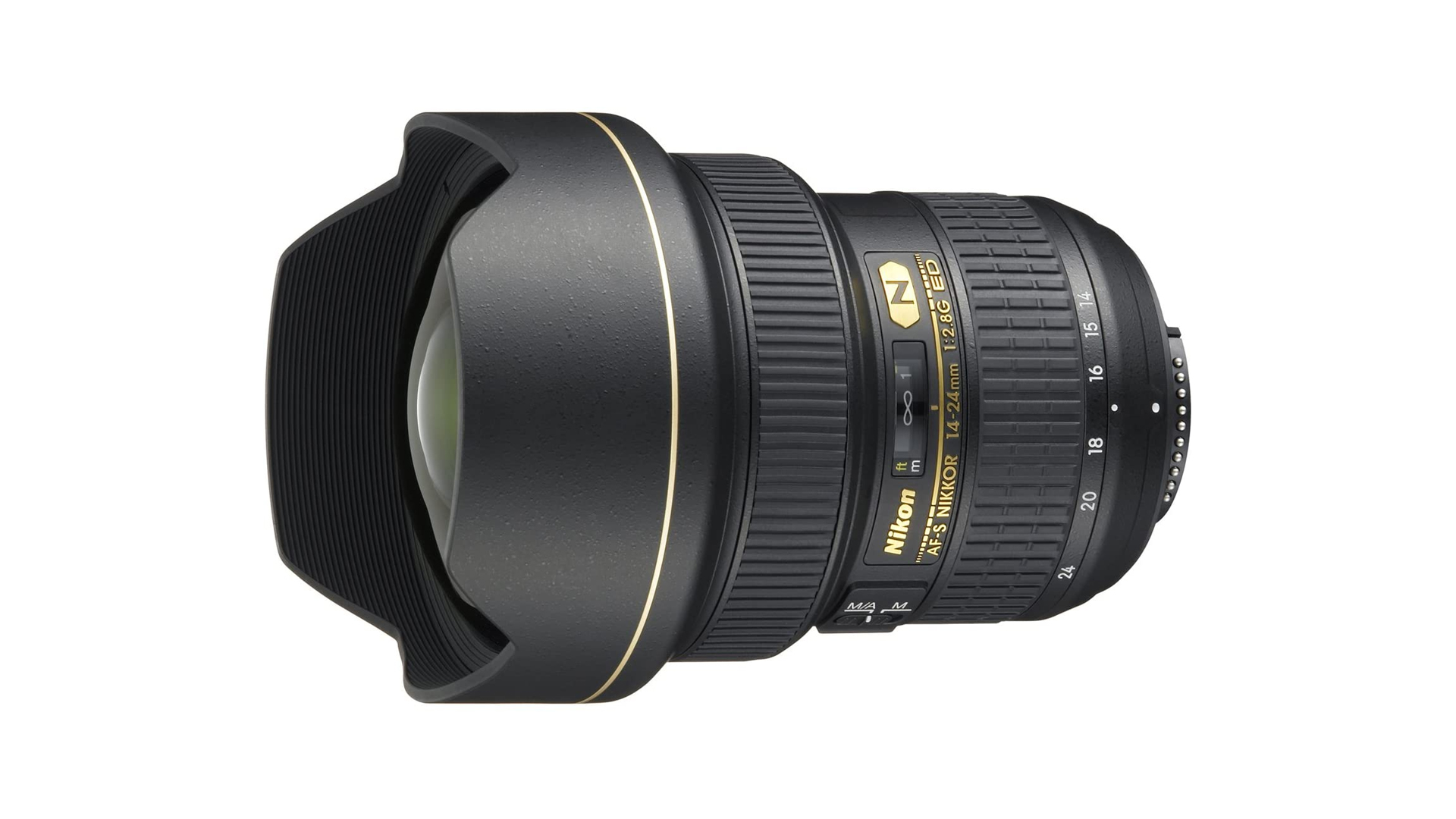Space Verdict
Built to last, the Nikon AF-S 14-24mm f/2.8 ED lens delivers edge-to-edge sharpness which plants it as one of the best ultra-wide zooms in the world
Pros
- +
Razor-sharp images
- +
Minimal lens distortion
Cons
- -
Adding filters is tricky
- -
Quite heavy for its size
Why you can trust Space.com
There are wide-angle lenses, and then there are ultra-wide lenses; kitted with a massive field of view, ultra-wide lenses fit in as much of the scene into the frame as you can get before hitting the fisheye threshold.The Nikon AF-S 14-24mm f/2.8 ED is an ultra-wide, and zooms from 14mm to 24mm, forming part of Nikon’s “holy trinity” of lenses, sat amongst the 24-70mm f/2.8 and 70-200mm f/2.8.
Type: Wide-zoom FX
Compatibility: Nikon, Full-frame
Focal range: 14-24mm
Aperture range: f/2.8 constant
Thread size: No thread
Weight: 2.2 lbs
Originally thought of as landscape and astrophoto lenses, especially when using the best cameras for astrophotography, ultra-wides are actually perfect portrait and documentary lenses provided that composition is suitably approached. The only downside to these lenses is that because the field of view is so wide, it’s important to nail the framing, especially with foreground elements. That means a lot of moving forward and back to get the right composition. Helpfully though, the Nikon AF-S 14-24mm f/2.8 ED has a generous focal length zoom range to remove this issue.
An insanely fast f/2.8 aperture makes this lens absolutely perfect for any kind of shooting, especially one involving low light levels, and that means astrophotography is where it really shines. Sharper than many prime ultra-wides, it’s hard to think of a situation where this lens wouldn’t do well, but it is a little on the heavy side, only fits F-mount Nikon bodies, and is difficult to find filters for, which we’ll explain down below, but it's still one of the best lenses for astrophotography, if you're one of the Nikon crowd.
Nikon AF-S 14-24mm f/2.8 ED review: Design
- Rubberized zoom grip
- Built-in lens hood
- Bulbous front element
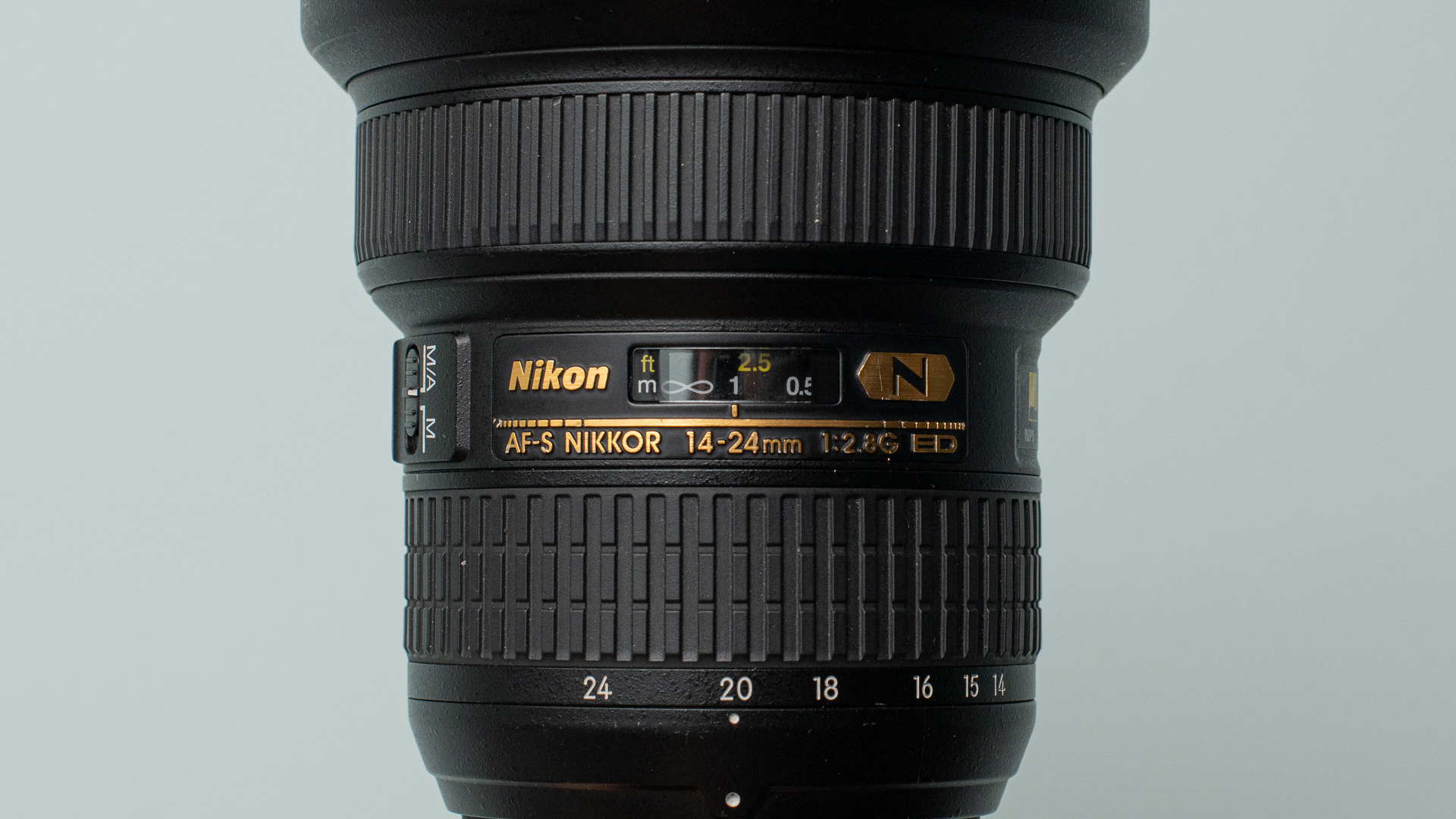
The lens design is simple but effective. Only one switch to move between manual and automatic focusing modes makes the lens barrel free from clutter. A rubberized grip on both the focal length and focus rings makes it easy to operate in wet, cold conditions, even while wearing gloves.
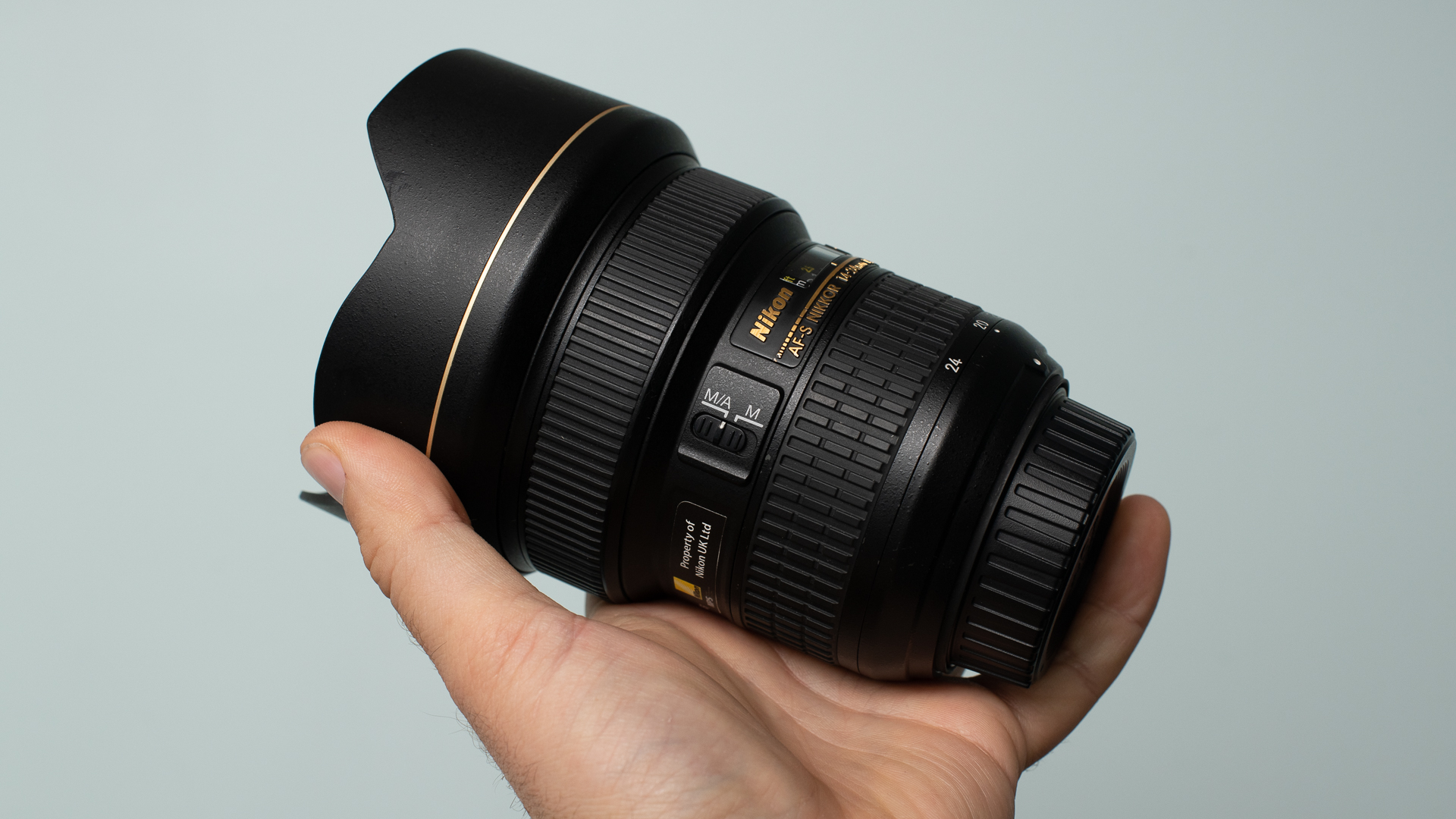
The Nikon AF-S 14-24mm f/2.8 ED is solidly robust, capable of taking a real pounding from professionals thanks to its metal mount. It confidently repels dust, dirt, moisture, and other grime thanks to its rubber seals which hold tight when locked into place on the camera body.
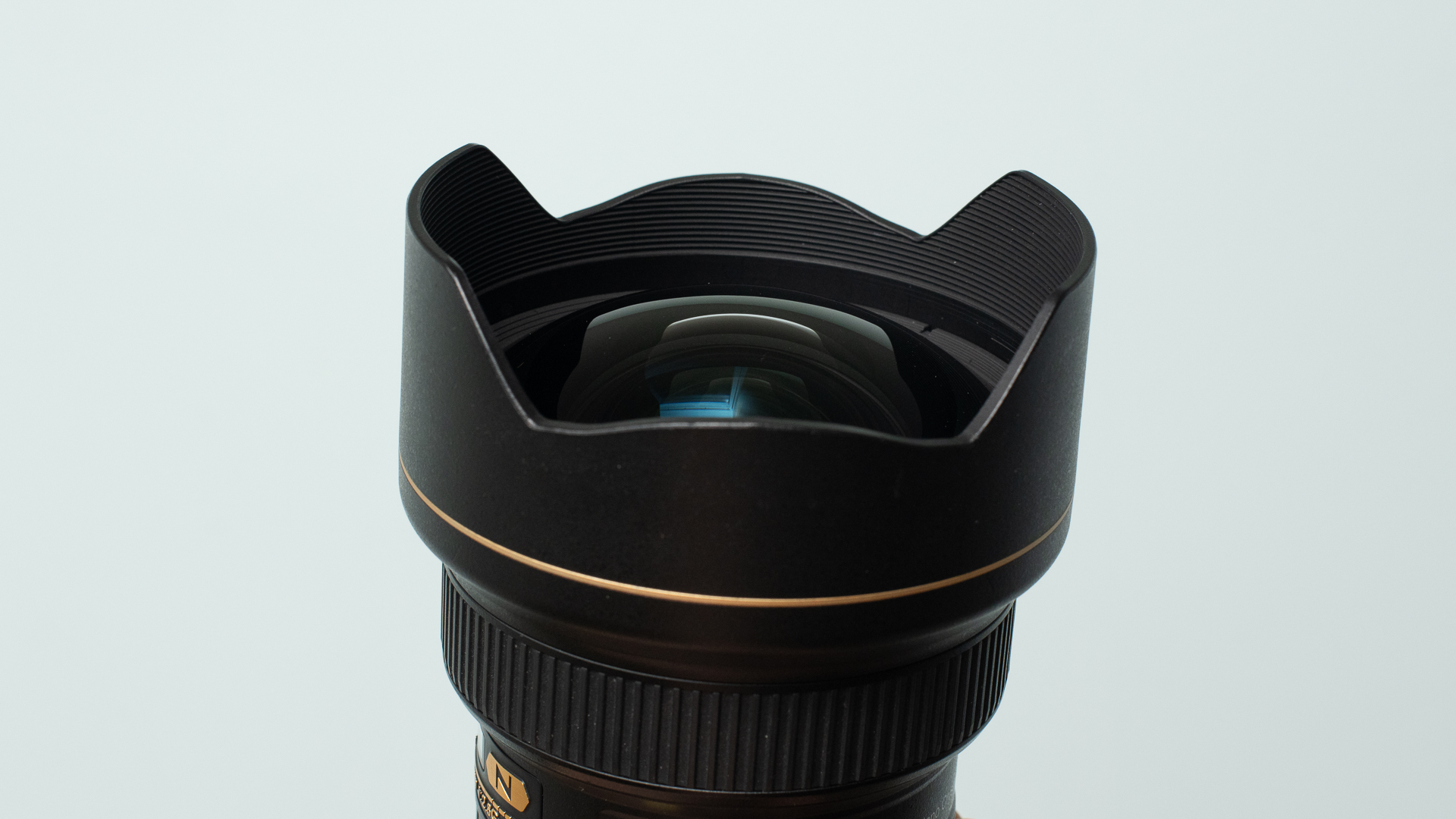
A convex front element on the lens does leave it vulnerable to damage as it protrudes out the front of the casing, but Nikon has thought that through. Encircling the front element is a built-in lens hood that has two main jobs: reducing flare from extraneous light and providing physical protection if the lens is bumped or dropped.
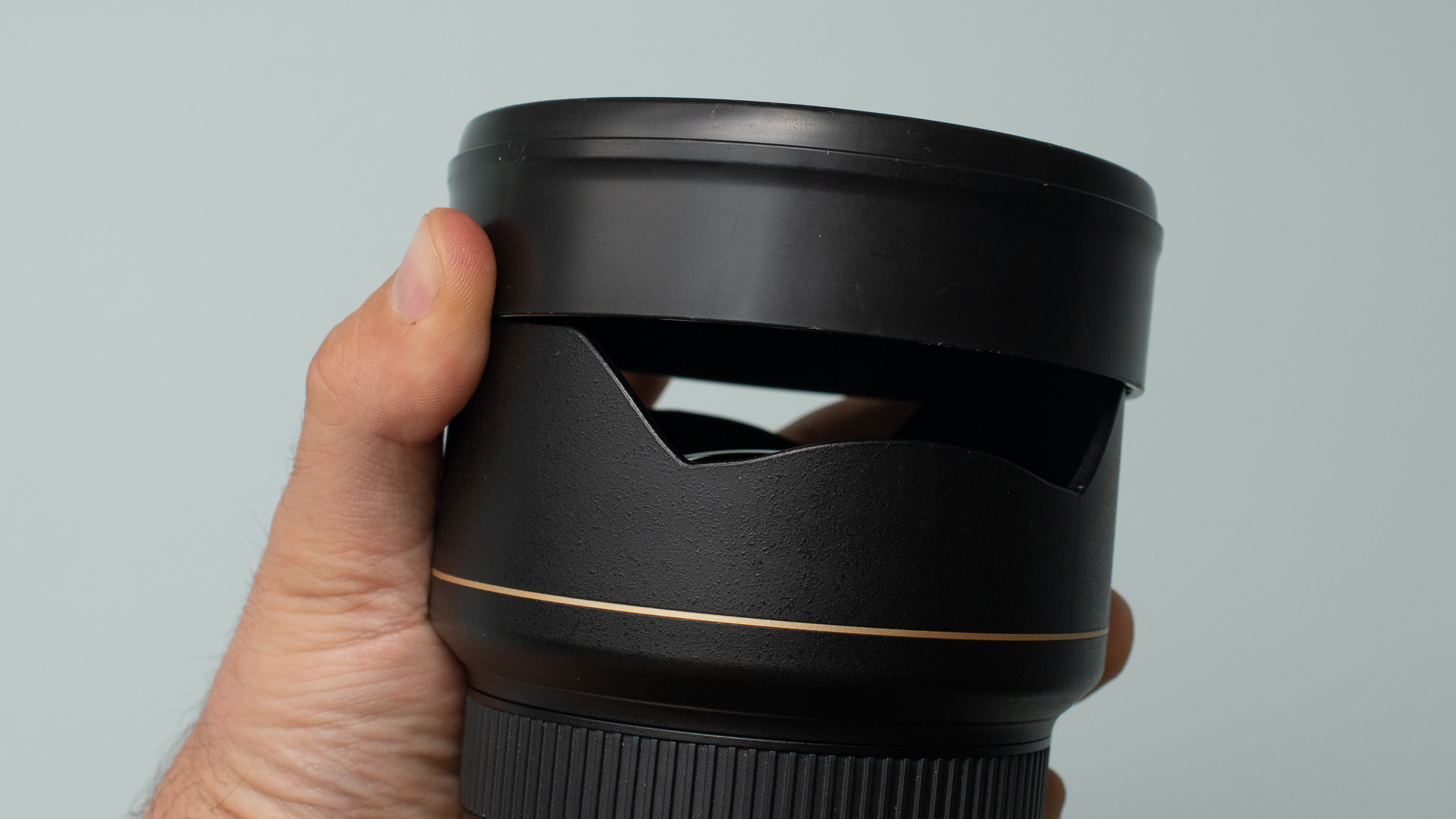
The inside of the glass is arranged into 14 elements in 11 groups (with 2 ED glass elements, 3 aspherical lenses, and one Nano Crystal Coat for flare reduction). The rear lens cap is a standard F-mount but the front, due to the convex front lens element, is capped by a rugged and snugly-fitted plastic lens cap that pushes over the lens, hood and all.
Breaking space news, the latest updates on rocket launches, skywatching events and more!
Nikon AF-S 14-24mm f/2.8 ED review: Performance
Although a little on the heavy side coming in at over 2 pounds, the optical performance of the Nikon AF-S 14-24mm f/2.8 ED is outstanding. Razor-sharp edge-to-edge, this beast rivals prime lenses when it comes to clarity. In fact, it’s so sharp at any focal length or any aperture that it may be the sharpest and most consistent ultra-wide DSLR lens in existence (notwithstanding Nikon’s newer 16-35mm). A Nano Crystal Coat helps to disperse light flare to capture even cleaner, clearer photographs.
Take a look at the test images below and you’ll see there’s minimal chromatic aberration (color fringing), only really appearing right at the edges of the frame. There are also no sharpness issues, and only mild vignetting - three big issues lenses in general have due to the huge field of view that needs to be fed down into the compact inch or so footprint of the image sensor. Astonishingly, there’s very little pincushion or barrel distortion either, and anything that’s leftover can be easily wiped away with a tick of the lens corrections box in post-production image editing software.
Autofocus is fast and reliable thanks to Nikon’s Silent Wave Motor technology and features Internal Focusing which means the lens is quieter and doesn’t spin around while focusing up. That makes the Nikon AF-S 14-24mm f/2.8 ED better for shooting with filters because the filters stay in the correct orientation. However, due to the convex front element, you’ll likely need a specialist lens mount adapter to fit any lenses onto it which is costly and frustrating to fit.
Should you buy the Nikon AF-S 14-24mm f/2.8 ED?
The Nikon AF-S 14-24mm f/2.8 ED is a legend of a lens because it came out at a time when no other lens could touch it in terms of focal length flexibility, wide constant aperture, and eye-widening sharpness. To this day it’s still a go-to for many professionals and amateurs alike because it provides sharp, clean, straight lines for architectural or interior photography but also works well in low light. It’s competitively priced and adding filters is frustrating, but if you can get past that you won’t be disappointed.
- Related: Astrophotography time-lapse tips
If this product isn’t for you
If you’re looking for an even sharper, sleeker ultra-wide zoom by Nikon you should definitely grab the Nikon 16-35mm f/4 VR. It has a slimmer body, is nearly half the weight of the 14-24mm f/2.8 and despite having an aperture a stop narrower at f/4 when compared with the old-timer, it also has 2.5stops of Vibration Reduction built-in for shooting sharp shots handheld in low light.
While the Nikon AF-S 14-24mm f/2.8 ED is a great lens, if you pair it with a DX crop-sensor body you’re seriously overspending as the sensor will literally crop right into the middle of the lens - negating all those glorious millimeters at the edges. Instead, it would be worth getting the Tokina ATX-i 11-16mm f/2.8 CF. It’s sharp, fast, light, and significantly cheaper

Jase Parnell-Brookes is the Managing Editor for e-commerce for Space and Live Science. Previously the Channel Editor for Cameras and Skywatching at Space, Jase has been an editor and contributing expert across a wide range of publications since 2010. Based in the UK, they are also an award-winning photographer and educator winning the Gold Prize award in the Nikon Photo Contest 2018/19 and named Digital Photographer of the Year in 2014. After completing their Masters degree in 2011 and qualifying as a teacher in 2012, Jase has spent the last two decades studying and working in photography and publishing in multiple areas, and specializes in low light optics and camera systems.
